House B in São Paulo invites the great outdoors inside
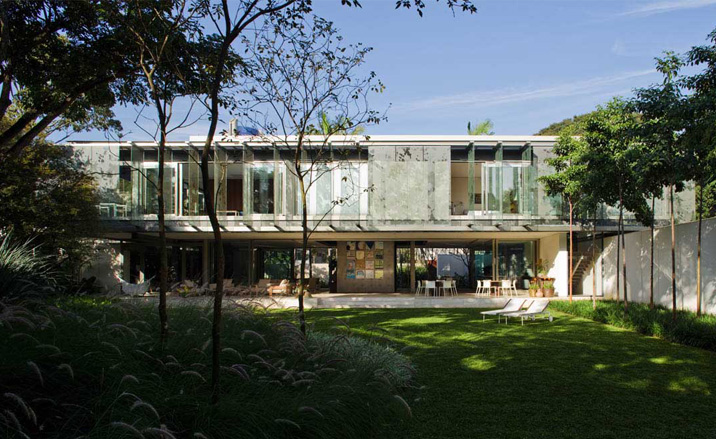
This house, located in the city of São Paulo, takes advantage of its privileged condition and makes the integration with the nature its distinctive trace. All its spaces keep a clear relationship with the 1,500 sq m park in which they are inserted.
In the ground floor, the social spaces are located under the shade of the upper volume of the house, connected to the gardens through a terrace and the glass sliding doors - that can be collected, creating an opening of 14 m width. The upper volume, conceived as a translucent box shelters the rooms and other spaces that require greater privacy.
The structure of the glass volume was conceived in such way that it seems to float on the garden, supported from the central pillar of reinforced concrete, that also shelters the stairs of access to the upper floor. The connection between the horizontal plans and this pillar of sustentation is strengthened by the creation of voids around the box of concrete, which are also used to bring natural light from the cover to the interior of the house.
All the upper volume is closed with a silkscreen-printed glass skin that works as a filter of light and sunshade. The print that composes the silkscreen works as a reverberation of the image of the park in the surface of the house, strengthening the interdependence between the architectural object and nature.
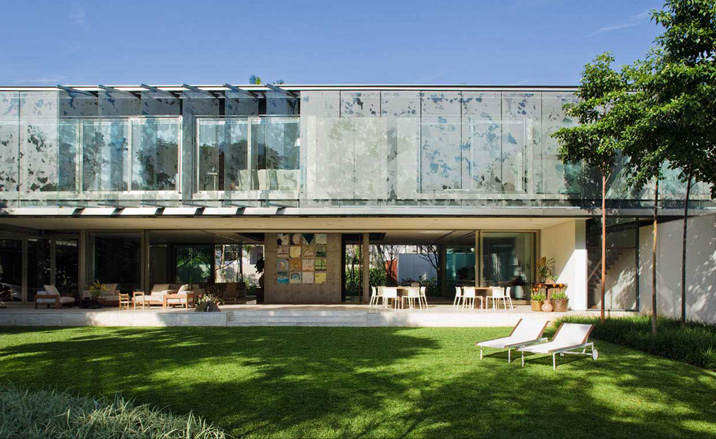
All its spaces keep a clear relationship with the 1,500 sq m park in which they are inserted
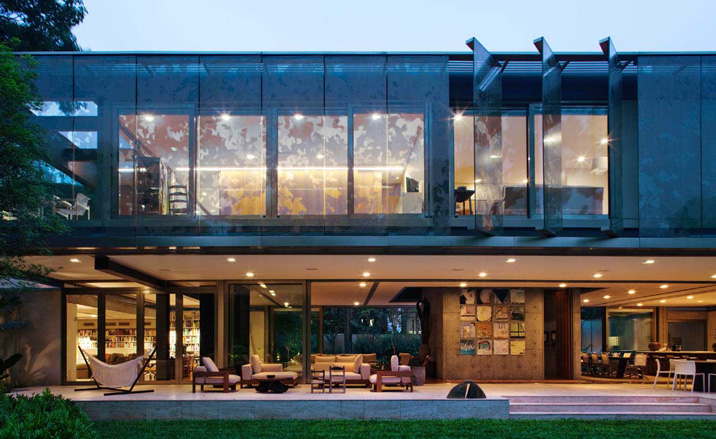
In the ground floor, the social spaces are located under the shade of the upper volume of the house...

...connected to the gardens through a terrace and the glass sliding doors - that can be collected, creating an opening of 14 m width
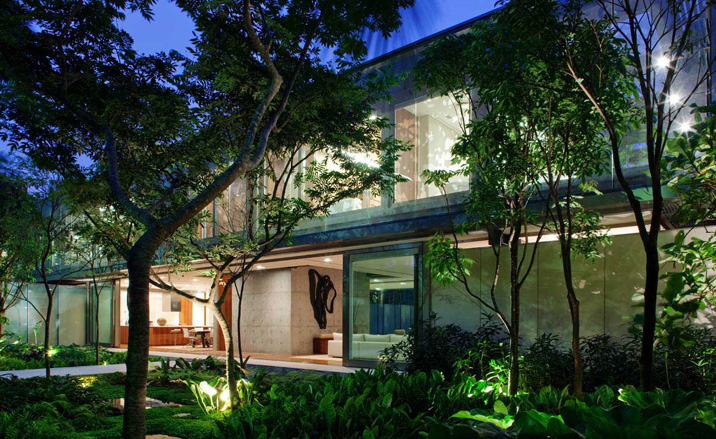
The upper volume, conceived as a translucent box shelters the rooms and other spaces that require greater privacy
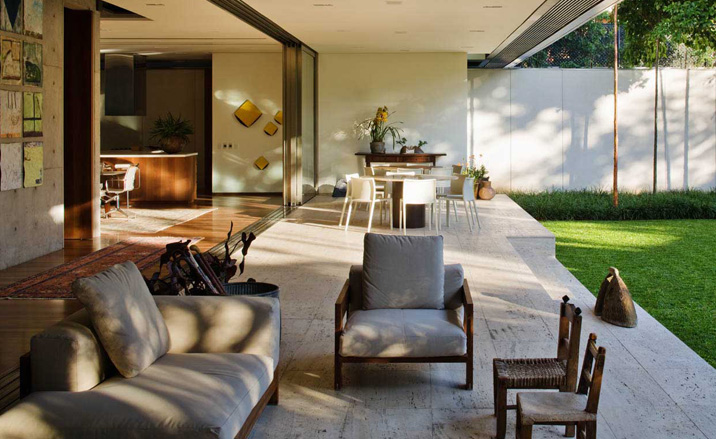
The structure of the glass volume was conceived in such way that it seems to float on the garden, supported from the central pillar of reinforced concrete, that also shelters the stairs of access to the upper floor
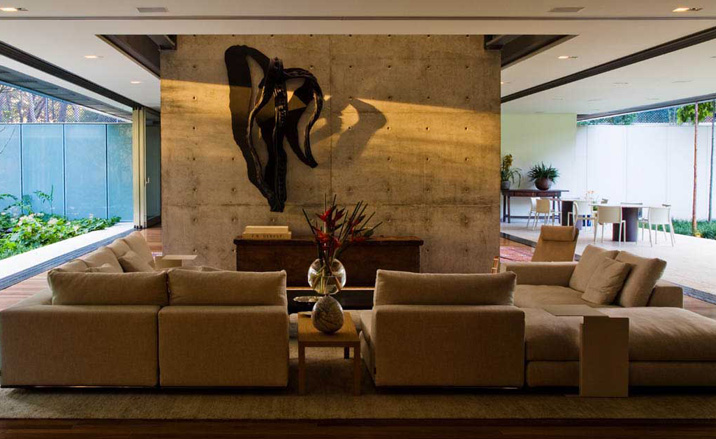
The structure of the glass volume was conceived in such way that it seems to float on the garden...
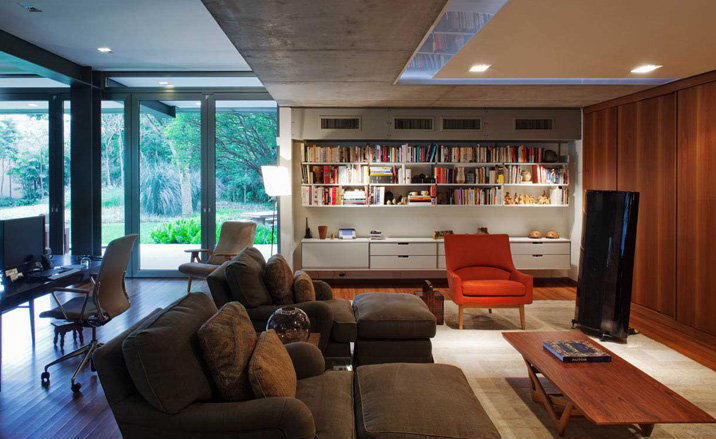
...supported from the central pillar of reinforced concrete, that also shelters the stairs of access to the upper floor

The connection between the horizontal plans and this pillar of sustentation is strengthened by the creation of voids around the box of concrete
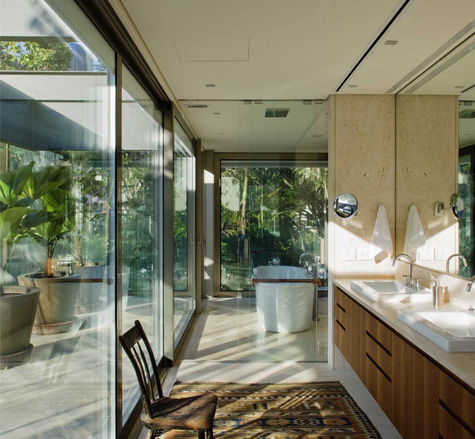
All the upper volume is closed with a silkscreen-printed glass skin that works as a filter of light and sunshade
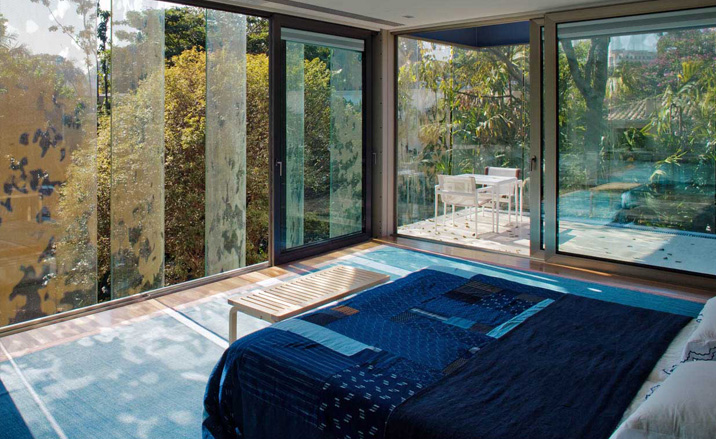
The print that composes the silkscreen works as a reverberation of the image of the park in the surface of the house...
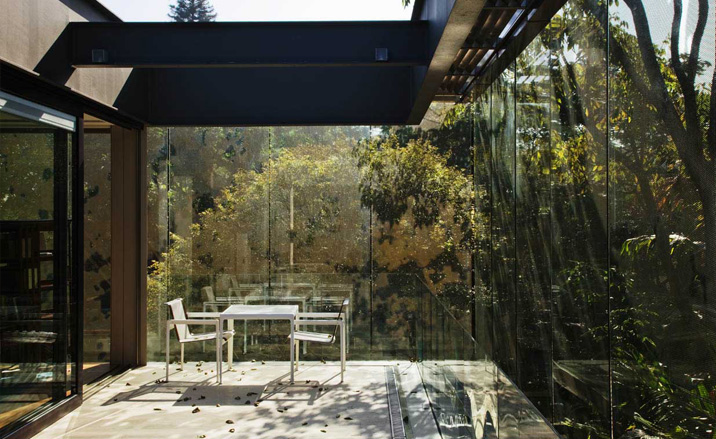
...strengthening the interdependence between the architectural object and nature
Receive our daily digest of inspiration, escapism and design stories from around the world direct to your inbox.
Ellie Stathaki is the Architecture & Environment Director at Wallpaper*. She trained as an architect at the Aristotle University of Thessaloniki in Greece and studied architectural history at the Bartlett in London. Now an established journalist, she has been a member of the Wallpaper* team since 2006, visiting buildings across the globe and interviewing leading architects such as Tadao Ando and Rem Koolhaas. Ellie has also taken part in judging panels, moderated events, curated shows and contributed in books, such as The Contemporary House (Thames & Hudson, 2018), Glenn Sestig Architecture Diary (2020) and House London (2022).
-
 Year in review: the shape of mobility to come in our list of the top 10 concept cars of 2025
Year in review: the shape of mobility to come in our list of the top 10 concept cars of 2025Concept cars remain hugely popular ways to stoke interest in innovation and future forms. Here are our ten best conceptual visions from 2025
-
 These Guadalajara architects mix modernism with traditional local materials and craft
These Guadalajara architects mix modernism with traditional local materials and craftGuadalajara architects Laura Barba and Luis Aurelio of Barbapiña Arquitectos design drawing on the past to imagine the future
-
 Robert Therrien's largest-ever museum show in Los Angeles is enduringly appealing
Robert Therrien's largest-ever museum show in Los Angeles is enduringly appealing'This is a Story' at The Broad unites 120 of Robert Therrien's sculptures, paintings and works on paper
-
 A spectacular new Brazilian house in Triângulo Mineiro revels in the luxury of space
A spectacular new Brazilian house in Triângulo Mineiro revels in the luxury of spaceCasa Muxarabi takes its name from the lattice walls that create ever-changing patterns of light across its generously scaled interiors
-
 A Brasília apartment harnesses the power of optical illusion
A Brasília apartment harnesses the power of optical illusionCoDa Arquitetura’s Moiré apartment in the Brazilian capital uses smart materials to create visual contrast and an artful welcome
-
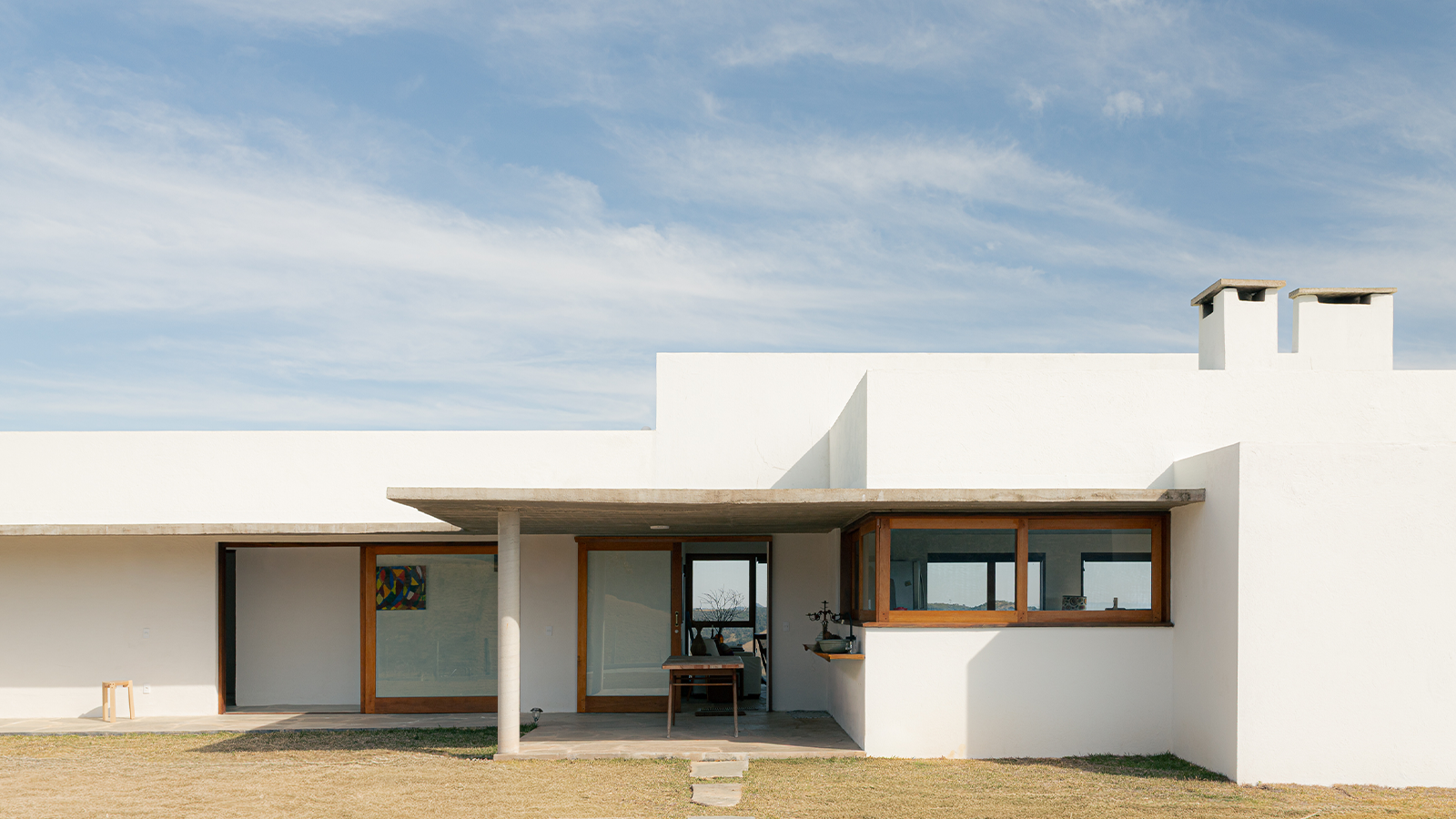 Inspired by farmhouses, a Cunha residence unites cosy charm with contemporary Brazilian living
Inspired by farmhouses, a Cunha residence unites cosy charm with contemporary Brazilian livingWhen designing this home in Cunha, upstate São Paulo, architect Roberto Brotero wanted the structure to become 'part of the mountains, without disappearing into them'
-
 Tropical gardens envelop this contemporary Brazilian home in São Paulo state
Tropical gardens envelop this contemporary Brazilian home in São Paulo stateIn the suburbs of Itupeva, Serena House by architects Padovani acts as a countryside refuge from the rush of city living
-
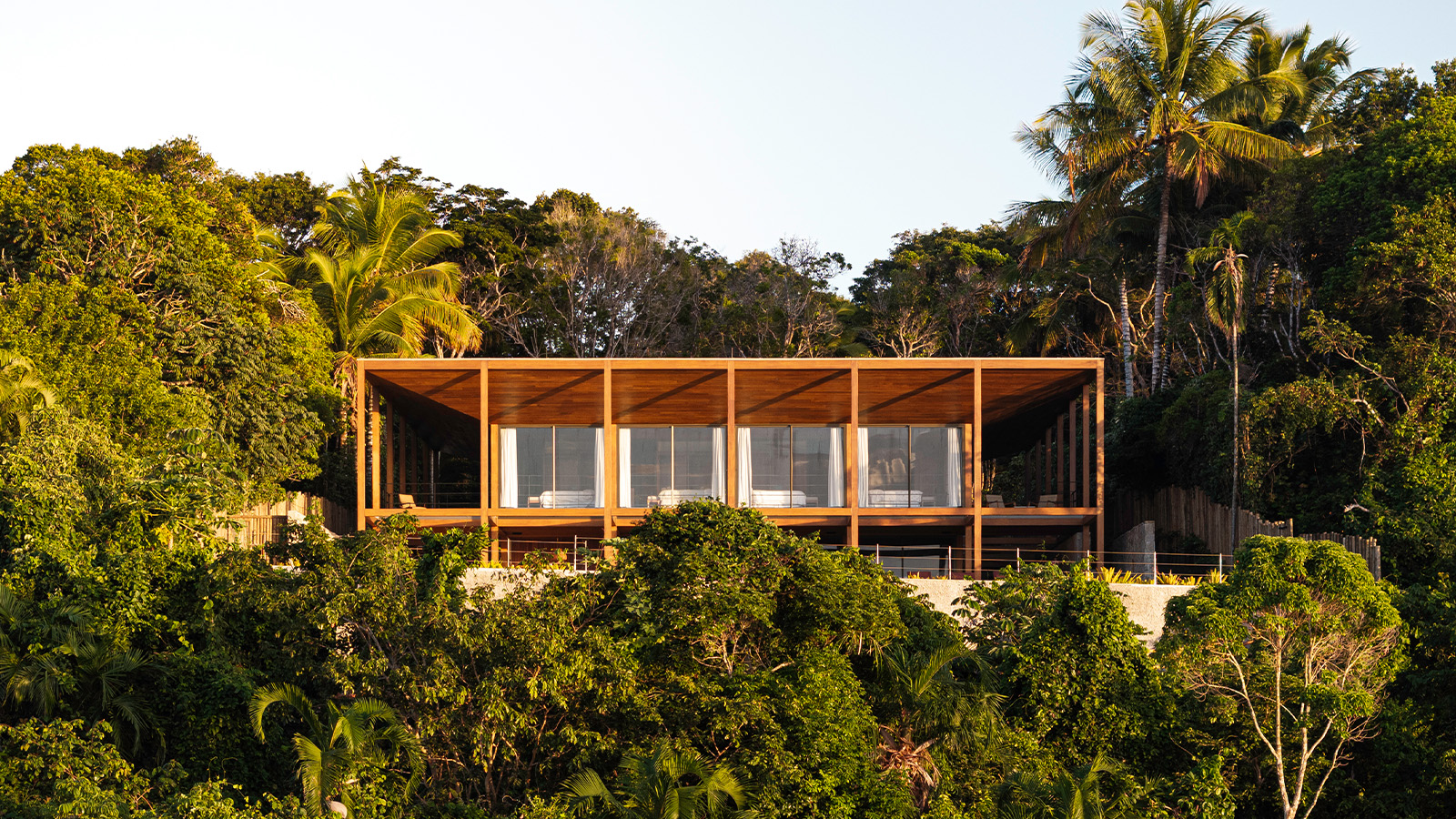 Itapororoca House blends seamlessly with Brazil’s lush coastal landscape
Itapororoca House blends seamlessly with Brazil’s lush coastal landscapeDesigned by Bloco Arquitetos, Itapororoca House is a treetop residence in Bahia, Brazil, offering a large wrap-around veranda to invite nature in
-
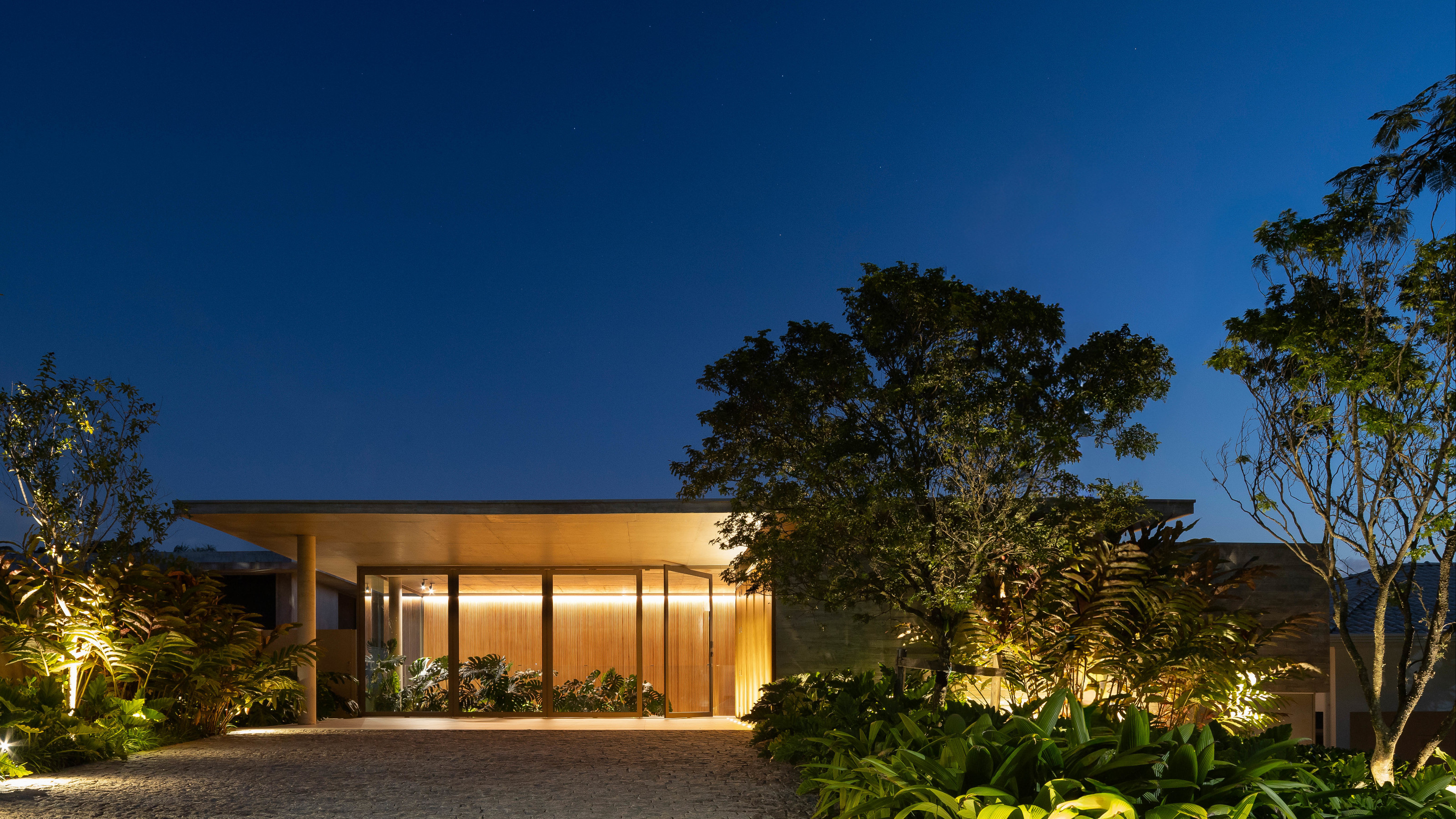 A new concrete house in São Paulo state is designed to open up to its hillside views
A new concrete house in São Paulo state is designed to open up to its hillside viewsArchitects Fernanda Padula and Juliana Risso have shaped this family house in Brazil from meticulously poured concrete forms, precise joinery and a close relationship with the landscape
-
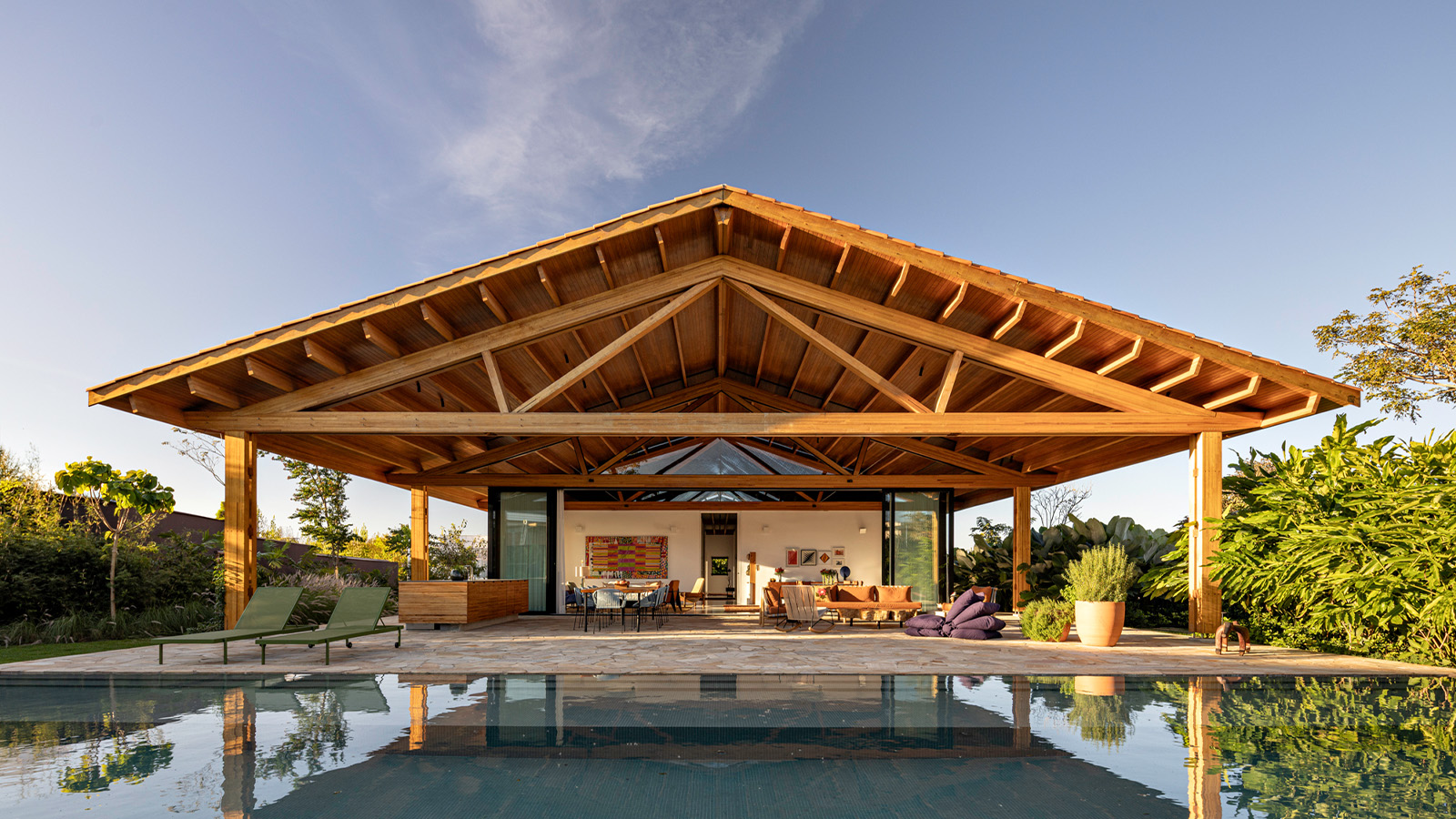 An upstate São Paulo house is rooted in culture and the location that inspires it
An upstate São Paulo house is rooted in culture and the location that inspires itBalancing tradition and modernity, upstate São Paulo house Casa MM by Equipe Lamas is ‘an oasis of intimacy within a residential setting’
-
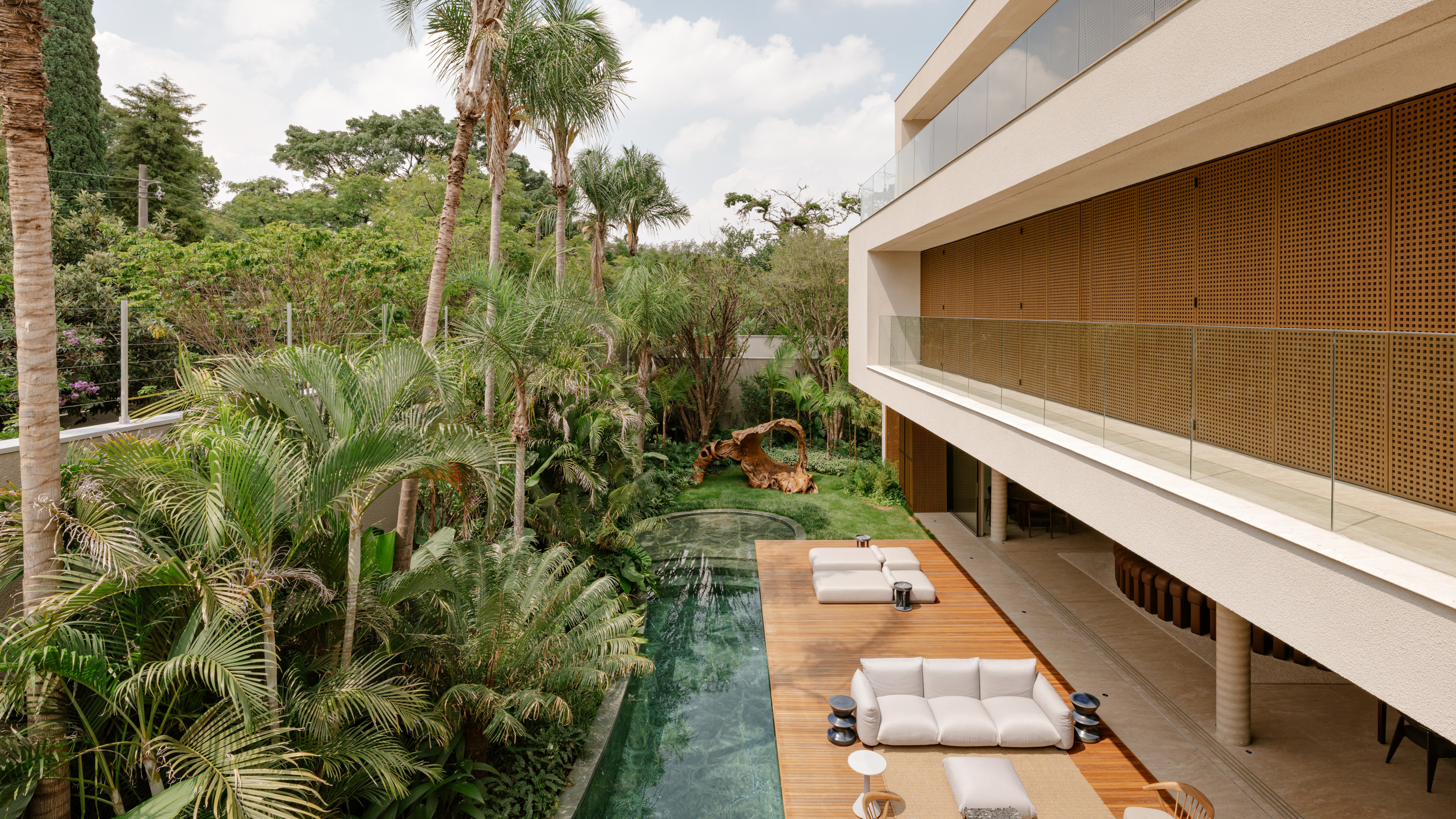 A masterful house in São Paulo invites jungle vegetation, water and natural light in
A masterful house in São Paulo invites jungle vegetation, water and natural light inA house in São Paulo by Meireles + Pavan Arquitetura, FR House, is a richly curated series of spaces designed to create worlds within worlds